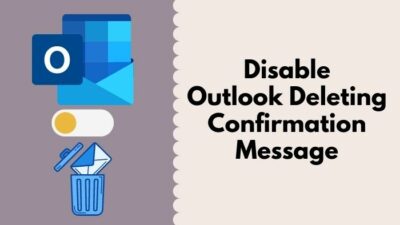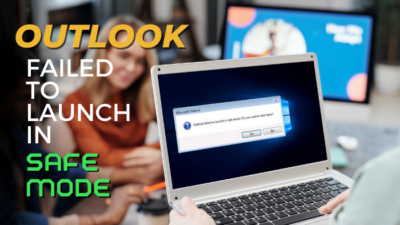Microsoft Outlook is undoubtedly a top-notch option for email management. In accordance with the number of users worldwide, Outlook stands the second-highest in 2021. Due to the excessive load of messages, your Outlook inbox may run out of space. The best and quickest way to solve it is by deleting some old messages. So simple, isn’t it?
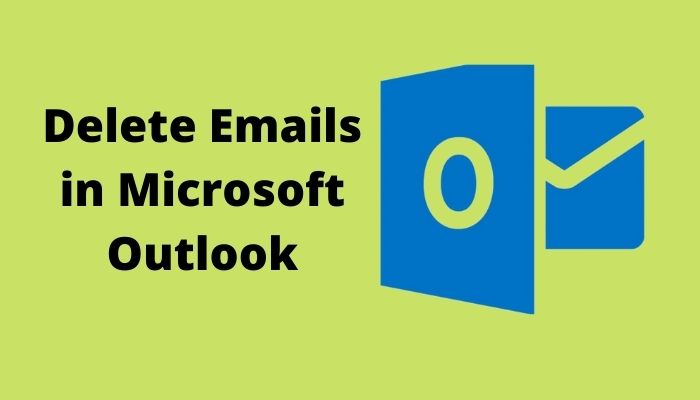
Unfortunately, a multitude of users these days reported that they could not delete emails or folders in Outlook regardless of the version. Are you also facing the same?
Well. Don’t worry. I am here to help you, my friend. As a technological geek, I researched it and obtained several foolproof ways to set you free from this issue.
Please, keep reading. And, if you want to clear all your doubts, I request you to read the article thoroughly.
Let’s get started.
How to Delete Emails in Outlook
When you go for deleting a message or a folder in Outlook, the problem primarily is that it gets freeze and stops working. Sometimes closing the application and then opening it may solve the issue. But, if the problem still appears, you should apply the methods I will demonstrate below.
Here are some simple fixes with step-by-step guidelines to delete emails and folders in Outlook:
Fix 1: Hard Delete the Messages
It frequently happens that you delete one email that is eventually stored in the trash. If the message is corrupted, it may cause a malfunction in your outlook. So, delete emails permanently that you would like to remove.
Here are the steps to hard delete emails:
- Open the Outlook application.
- Select the messages or emails that you want to delete.
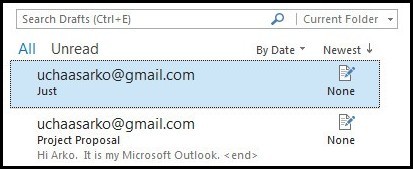
- Press Shift+Delete keys from the keyboard simultaneously.
It is the most basic way to solve your problem. But, if still, you cannot delete it, try the next ones.
Here’s a complete guide on how to add email signature in Outlook.
Fix 2: Update and Repair MS Office
Many users reported to me that they got rid of the above problem just by updating and repairing Microsoft Office. With outdated Outlook applications, you may fall victim. That’s why, follow the steps below.
- Launch any application from Microsoft Office, i.e., Word, Powerpoint, Excel, Access, etc.
- Navigate to File.
- Click on Options, and then Update Options. A dropdown menu will pop up.
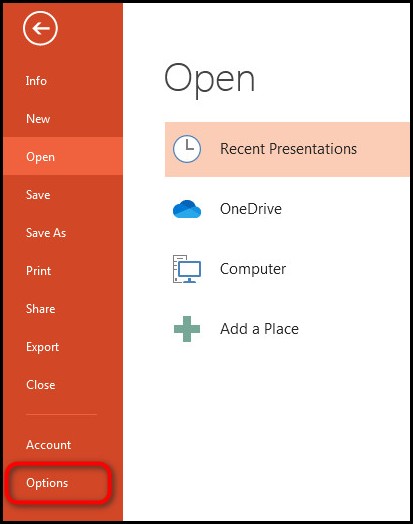
- Press the Update Now button to check for updates.
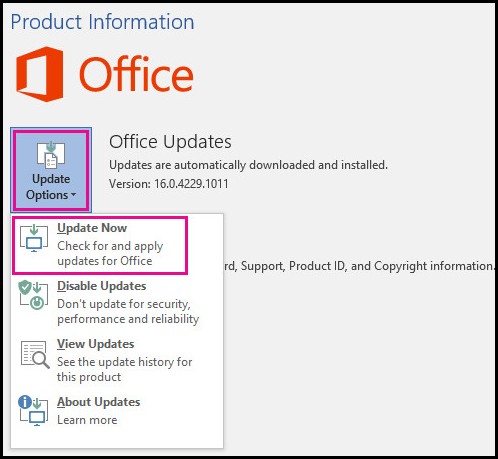
- Open the Control Panel.
- Set the view option by Large icons and select Programs and Features. You will get a list of all installed applications on your system.
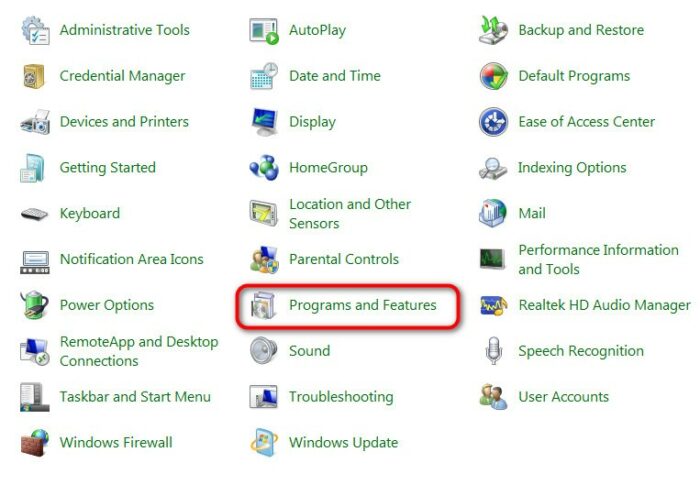
- Find out the Microsoft Office and click on it.
- Tap to Change button next to Organize.

- Select the Quick Repair radio button and then click on Repair.
- Wait until the process finishes.
- Start the Outlook application again and check if the problem persists.
Quickly check out our epic guide on Lock and Unlock Cells in Excel.
Fix 3: Use Cleanup Tools
You can also use the cleanup tools built-in in the Outlook application. Want to know how? Track the following steps.
- Launch Outlook application.
- Click on File.
- Select Info from the left pane. As Info is the first option on this page, you will automatically be directed to the Info page.
- Click on the Cleanup Tools option. A dropdown menu will show up.
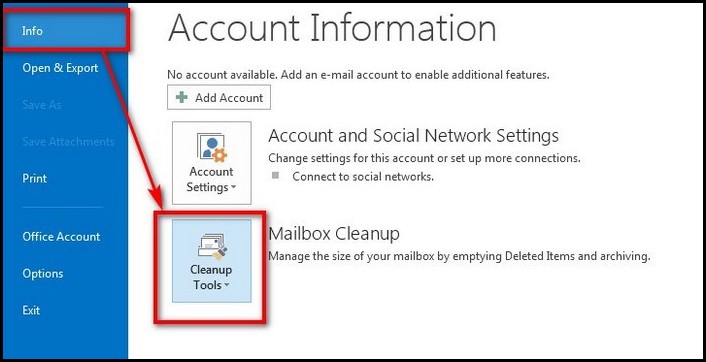
- Select the Mailbox Cleanup tool from the options, and check the unnecessary emails you want to remove.
- Select the Empty Deleted Items Folder just below the Mailbox Cleanup tool.
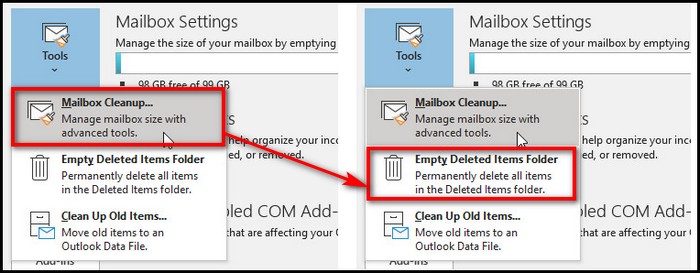
- Restart Outlook and check if the emails are gone.
Also, check out our separate post on how to view message headers in Outlook.
Fix 4: Run Outlook in Safe mode
If the previous fixes did not work for you, try running your Outlook in safe mode. It is quite a straightforward process.
Here are the steps on how to run outlook in safe mode:
- Launch the Run prompt. You can use a shortcut of Windows+R.
- Type Outlook.exe /safe in the prompt.
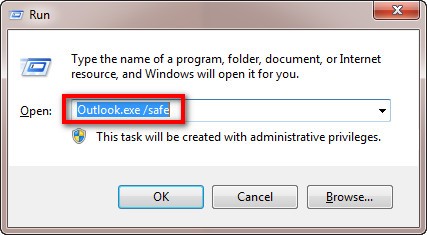
- Hit Enter.
Now, check whether or not you can delete the stubborn emails.
Fix 5: Check Trash Folder Settings
Checking and modifying the settings of the trash folder may work for you on the unable to delete emails issue.
Here are the steps for you on how to check trash folder settings:
- Open the Outlook.
- Navigate to Send / Receive next to Home.
- Click on Send/Receive Groups. A small dropdown will come.
- Select Define Send/Receive Groups. A window will pop up.

- Click on the Edit button and choose your account.
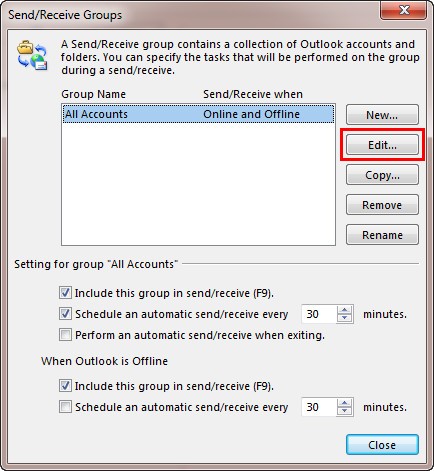
- Click on the Account Properties.
- Check if the delete options are available under the folder Deleted items.
- Select the Trash folder.
- Move to the Advanced tab.
- Check the option Remove from server when deleted from ‘Deleted items’
- Click OK and restart Outlook.
Here’s a complete guide on how to fix Microsoft excel freezing or slow.
Fix 6: Empty the Deleted Items Folder
If the folder of your deleted emails contains corrupted attachments, clean it up instantly.
Here are the steps how to do this:
- Launch Outlook application.
- Right-click on the folder Deleted Items. You will find it on the left panel under the section of Outlook Data File. After clicking, a dropdown menu with options will appear.
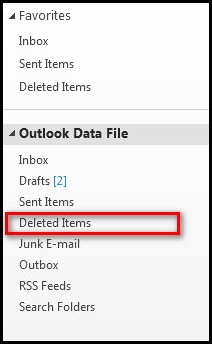
- Click on Empty Folder. It will clear the Deleted Items folder.
Now, check if you can delete useless emails. If yes, enjoy! If not, try the following method. You may log out and then log in to outlook for better results. For some, it worked.
Fix 7: Increase the Size of PST File
- Launch the Run prompt from the Start menu. Alternatively, use the shortcut of Windows+R.
- Type regedit in the search bar and hit Enter.
- Click on Yes when the User Account Control dialog box pops up.
- Copy the location HKEY_CURRENT_USER\Software\Microsoft\Office\16.0\Outlook\PST in the top search bar and press Enter. This path is for the 2019 and 2016 versions. For Outlook version 2013, 2010 and 2007, replace 16.0 with 15.0, 14.0 and 12.0 respectively. (7_4)
- Check if MaxLargeFileSize and WarnLargeFileSize DWORDs are there. If not, create those.
- Double click on the MaxLargeFileSize key.
- Select Decimal under Base in the Edit DWORD pop-up.
- Set the Required Maximum Value field to MBs.
- Double click on the WarnLargeFileSize key.
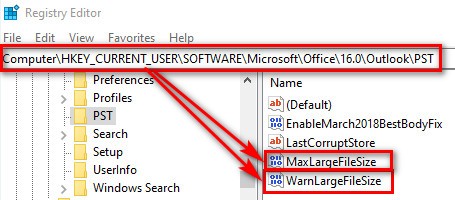
- Select Decimal again and set the value to MBs.
- Restart your computer and relaunch the Outlook application.
Now, check if you can delete the selected emails. If you are unsuccessful, try the next method.
Fix 8: Repair the PST File
- Open the Outlook.
- Navigate to the File tab.
- Click on the Account Settings box. A dropdown will appear.
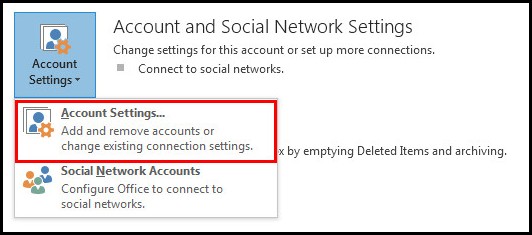
- Click on the Account Settings again from the menu.
- Go to the Data Files tab from the Account Settings window.
- Get the location down.
- Go to the Outlook 2019: C:\Program Files (x86)\Microsoft Office\root\Office16 path.
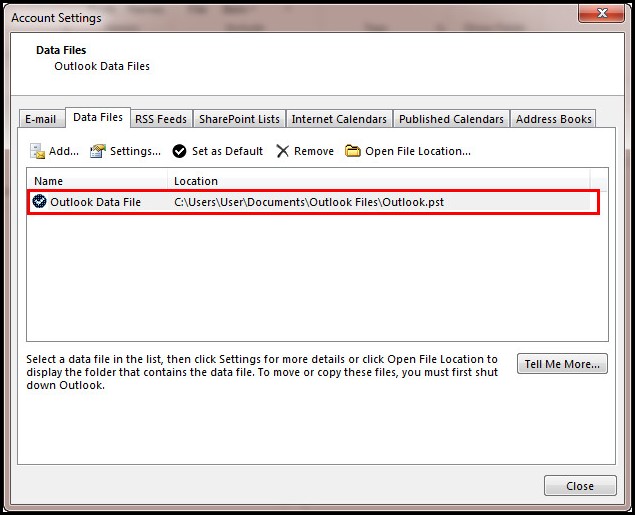
- Double click on SCANPST.EXE. A floating dialog box will appear.

- Paste the location in the field Enter the name of the file you want to scan.
- Press the Start button.
That’s it.
Fix 9: Edit, Save and Delete Messages
This is not such a highly logical measure. But, sometimes, it works.
- Open the email you are facing trouble deleting.
- Make an edit on it.
- Save it.
- Try to delete it now.
Let me know if it works in your case.
Check out the Microsoft Refund policy to get absolutely full refunds to your products.
Fix 10: Uninstall and Reinstall MS Office
If your installation process contains any glitches that you feel, go for an uninstall and fresh installation of MS Office.
Here are the steps on how you will uninstall and reinstall MS Office:
- Go to the Control Panel.
- Click on Programs and Features.
- Find MS Office from the installed applications. Click on it.
- Click on the Uninstall button next to Organize.
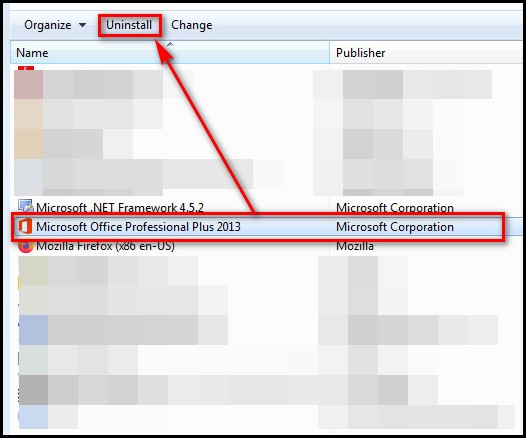
- Wait until the uninstallation process completes.
Now, install the MS Office and run Outlook. Hope you will be successful in your job.
Final words
To sum up, I demonstrated almost all possible ways of deleting problematic emails on Outlook. The steps are exactly what to do if you cannot delete outlook messages. At least one of the ten methods should work efficiently in your case. Even numerous users reported me so.
It is such an easy task that not being capable of deleting any unnecessary email can enrage you anyway. I can understand you, and that’s why I tried to make this troubleshooting article. Please, let me know what happened to you.
Was this article helpful? If yes, share it with your peers.



